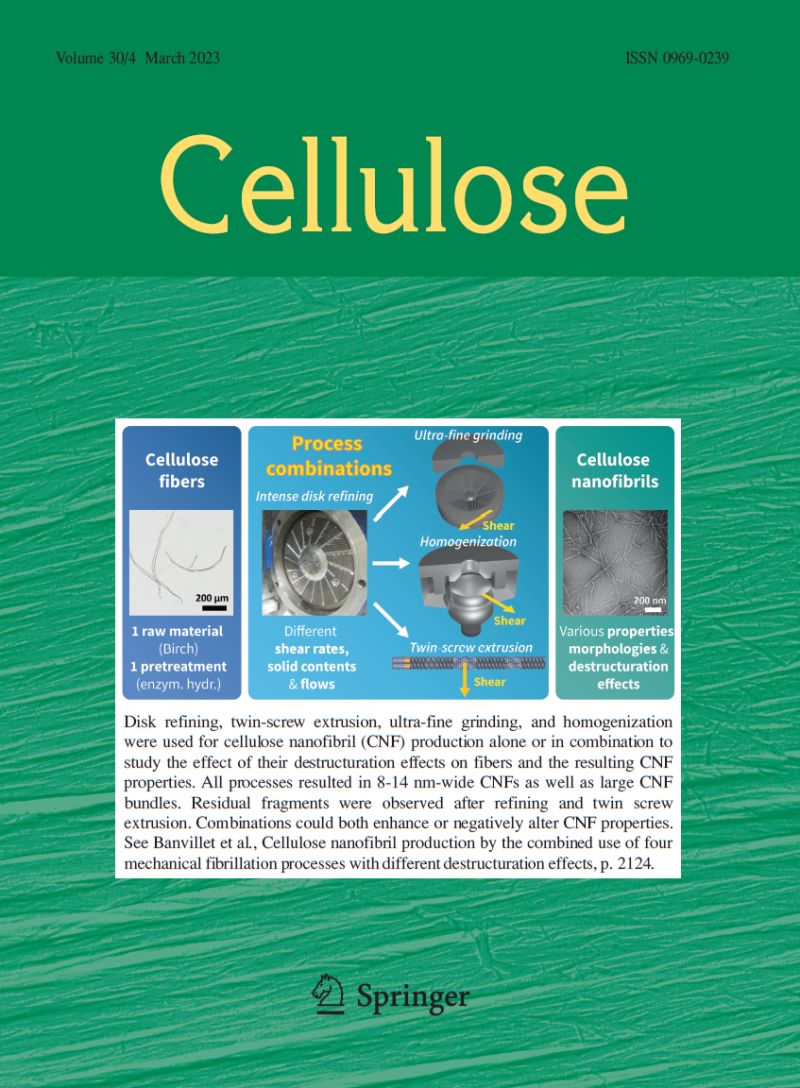Liquid crystal properties of cellulose/4-(ω-(methylimidazole)hexyloxy)-4'-(cyano)-biphenyl/amine-modified graphene solution and its high-strength fiber
Abstract
To enhance the mechanical properties of cellulose fibers for high-strength applications, this study explores the incorporation of amine-modified graphene (G-NH2) into the cellulose/4-(ω-(methylimidazole)hexyloxy)-4'-(cyano)-biphenyl(CBP6)/ionic liquid system. By adjusting experimental temperature, time, and G-NH2 composition, a cellulose/CBP6/G-NH2/ionic liquid liquid crystal solution was successfully developed. The liquid crystal properties of the solution were characterized using polarizing optical microscopy and differential scanning calorimetry, among other techniques. Results indicated that the introduction of G-NH2 altered the liquid crystal texture and introduced novel liquid crystal phenomena. Regenerated cellulose fibers from the cellulose/CBP6/G-NH2 system exhibited a breaking strength of 3.82 cN/dtex and an elongation at break of 8.1%, prepared with 6 wt% cellulose, 3 wt% CBP6, and 0.2 wt% G-NH2, through liquid crystal spinning. The structural and mechanical properties of these fibers were thoroughly characterized. This study not only presents a new strategy for producing high-performance regenerated cellulose fibers but also offers valuable insights for the development of cellulose-based composites.

 求助内容:
求助内容: 应助结果提醒方式:
应助结果提醒方式:


